Sotheby’s – Two impossible watches that shouldn’t exist
A evening pause: The subject of watches and time, possibly linked to astronomy, seems fitting on this first day of the new year, when we start a new number in our lives.
Hat tip Cotour.
A evening pause: The subject of watches and time, possibly linked to astronomy, seems fitting on this first day of the new year, when we start a new number in our lives.
Hat tip Cotour.
In 2025 the worldwide revolution in rocketry that began about a decade ago continued. Across the globe new private commercial rocket companies are forming, not just in the United States. And across the globe, the three-quarters-of-a century domination by government space agencies is receding, though those agencies are right now pushing back with all their might to protect their turf.
Dominating this revolution in 2025 in every way possible however were two entities, one a private American company and the second a communist nation attempting to imitate capitalism. The former is SpaceX, accomplishing more in this single year than whole nations and even the whole globe had managed in any year since the launch of Sputnik. The latter is China, which in 2025 became a true space power, its achievements matching and even exceeding anything done by either the U.S. or the Soviet Union for most of the space age.
» Read more
An evening pause: From the 1942 film Holiday Inn. Stay with this after the song for a truly spectacular dance number by Fred Astaire, dancing as a New Year’s Eve drunk with Marjorie Reynolds.
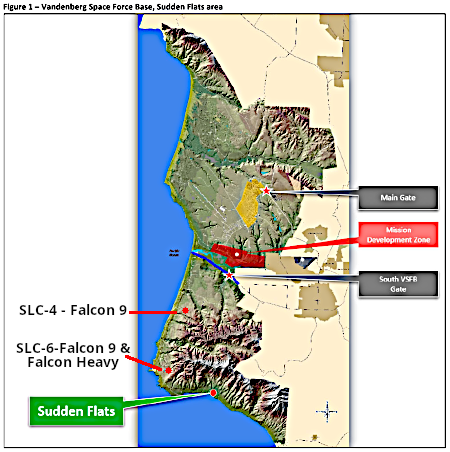
The Space Force on December 29, 2025 released a request for information (RFI) from the private sector for building a new launchpad at the southern-most tip of Vandenberg Space Force Base, for use by “new” heavy and super-heavy rockets.
The Space Force said it prefers to use the site for new vehicles rather than ones that already have launch sites at Vandenberg, to “increase launch diversity” at the base. The service is also interested in vehicles with “unique capabilities,” such as point-to-point transportation or the ability to return payloads.
The RFI emphasizes the need for “technically mature” vehicles capable of operating from SLC-14 within five years of signing a lease agreement. Companies must also provide details about their operations to address safety concerns and minimize impacts on other launch operators at the base.
You can read the actual RFI here. The map to the right, taken from the RFI and annotated to post here, labels the area under consideration as “Sudden Flats”. SpaceX’s two launchpads are indicated, with SLC-6 presently under development.
Though the description of the request appears to favor SpaceX, it could also apply to Blue Origin’s New Glenn as well as the company’s proposed larger versions of that rocket.
The request asks for proposals within 30 days.
A evening pause: A nice rendition of the Gordon Lightfoot song on an instrument called the squareneck dobro.
Hat tip Cotour.

Jim Cantrell at Vector in 2017, shown in front of
one of his side businesses, fixing and refurbishing race
cars and rare luxury sports cars (located then at Vector).
The tales of rocket startups are often fraught with ups and downs of all kinds, often traveling in circles that no one can ever predict. This is one such tale.
In the mid-2010s there was a rocket startup called Vector, based here in Tucson, founded by a guy named Jim Cantrell. At that time Cantrell pushed the company in the style of Elon Musk, going very public for publicity and to raise investment capital.
He was remarkable successful at both. Unfortunately, his engineers were not as successful at engine building. After years of effort they all realized that their rocket engines were under-powered, and wouldn’t be able to get the rocket into orbit. In 2019 the company’s biggest investor backed out, Cantrell left the company, and new owners took over, hoping to rebuild.
Flash forward to 2021, and Jim Cantrell has reappeared with a new rocket company, Phantom Space, also based in Tucson, raising $6 million in seed capital. In the next four years he obtained a small development contract from NASA, completed two more investment rounds raising first $22 million and then around $37 million, and began development of a new orbital rocket, dubbed Daytona. The company also began work on its own small satellite constellation, PhantomCloud (more on this later).
As for Vector, there was little to report during those four years. The only update said the company was buying engines from the rocket engine startup Ursa Major, the same company Phantom was using.
It is now the end of 2025, and the fate of these two companies has once again intertwined, in a most ironic manner. Last week I learned from Jim Cantrell that Vector had closed shop, and that its last remaining assets, some of which Cantrell himself had helped develop when he headed Vector, had been bought by Phantom. This includes several unused rocket stages, the vertical rocket test stands, a lot of computers, and hardware.
» Read more
A eveningpause: From the 1947 musical Down to Earth, where Hayworth places the goddess of dance, who comes down from heaven to save the show.
Hat tip Judd Clark.
SpaceX has now withdrawn the Starlink services it informally had provided customers in Papua New Guinea after a volcano eruption in 2021 due to regulatory demands by the government there.
It’s been two and a half years since a volcano eruption tore apart Tonga’s underwater internet cables, and a sympathetic Kiwi MP pleaded to Elon Musk for help on their behalf. Musk, CEO of SpaceX, would answer Shane Reti’s call, offering his Starlink technology in aid of their reconnection to the world.
Starlink’s Pacific debut came with limited trials in American-owned Guam and the Northern Marianas, followed by the Cooks in April 2021. But for the wider Pacific community, its deployment in Tonga captured hearts and minds. The service, provided by a special satellite network, has been hailed as “transformational” in numerous island nations, broadening internet coverage to remote areas, some for the first time.
That is, unless, you’re in Papua New Guinea. Starlink’s attempts to gain licensing in PNG have been tied up since December 2023, with the Ombudsman Commission challenging the government over Starlink’s reliability. The Commission blocked licensing efforts in February 2024, and have argued that existing regulations may not be adequate to manage potential risks to public interest and safety.
In-fighting within Papua New Guinea’s government continues to block Starlink license approval, so it appears SpaceX has decided the best way to get a positive decision is to walk away, hoping the ensuing pressure from its customers might force action from the government.

In what might be a larger decision by the European Space Agency (ESA) to pull back from support to ISS, the agency has cancelled a call for proposals that asked private commercial startups to provide cargo to ISS.
On 3 October, ESA published a call for proposals under its CSOC Cargo Commercially Procured Offset (3CPO) initiative, seeking commercial transport services to the ISS to deliver between 4,900 and 5,000 kilograms of pressurised cargo to the orbiting laboratory. According to the call, the mission was intended to act as a “strategic offset’ to secure flight opportunities for ESA astronauts. It did, however, stipulate that the prospective procurement would only proceed if member states agreed to fund the initiative at the agency’s Ministerial Council meeting on 26 and 27 November 2025.
Following the late November meeting, ESA announced that member states had “agreed to implement short-term actions to guarantee European astronauts’ access to the International Space Station until its planned end of exploitation in 2030.” While this initially appeared to signal a favourable decision on the 3CPO initiative, the agency formally cancelled the call on 17 December, citing “the implementation of programmatic adjustments.”
What makes me speculate that this decision is part of a larger strategy to pull back from ISS is based on other statements by ESA officials cited in the article. It appears ESA is also delaying the mission of one astronaut to ISS that had originally been planned for ’26, possibly by as much as two years.
Though that official said ESA had fully funded its commitments to ISS at its recently concluded ministerial council meetings, both of the above decisions suggest it is shifting its support elsewhere. It could very well be that ESA is beginning the process of transferring its support from ISS to the new commercial private stations, most especially Starlab, which it already has signed a partnership agreement. By delaying funding to ISS, it reserves that money for later use at the new stations.

Australian spaceports: operating (red dot) and proposed (red “X”)
Click for original image.
The American orbital capsule company Lux Aeterna has now signed a deal with the Australian spaceport startup Southern Launch to allow its capsules to land at its Koonibba Test Range in southern Australia.
Under the agreement, two Lux Aeterna Delphi satellites will return to the Koonibba Test Range with Southern Launch. The first mission is targeted to return in 2027.
Lux Aeterna, based in Denver, Colorado, USA, is developing a reusable satellite platform designed to operate in Low Earth Orbit and support defense, intelligence, and commercial missions such as technology demonstrations, hypersonic and materials testing, in-orbit servicing, and in-space manufacturing. The Delphi platform and its core components are engineered to withstand the thermal and structural demands of atmospheric re-entry, enabling routine return and recovery of both the satellite bus and payload to support expedited technology development.
…Under the partnership, Southern Launch will provide end‑to‑end services for each orbital re-entry, including regulatory approvals, range operations, air and maritime coordination, and recovery operations.
This is the second American orbital capsule company to sign with Southern Launch. Varda was the first, and it did so because red tape in the U.S. made use of an American drop zone impractical. It appears Lux Aeterna has come to the same conclusion, and thus went to Australia instead.
This is an issue that needs to be addressed by the Trump administration. It is absurd that red tape is forcing American capsules to land in another country on the other side of the globe.
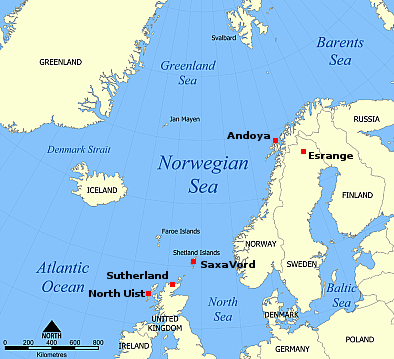
Spaceports surrounding the Norwegian Sea
In a press release earlier this week, the German rocket startup Isar Aerospace announced that it has successfully completed static fire tests of both stages of its Spectrum rocket, and is now prepared for a second attempt to reach orbit, nine months after the first attempt failed seconds after liftoff.
Though its press release made no mention of a launch date, rocketlaunch.live is listing that attempt for January 13, 2026, taking place at Norway’s Andoya spaceport.
If successfully, the launch will achieve a number of milestones. First, Isar will be the first German rocket company ever to launch a rocket into orbit. Germany’s government has for decades been a partner in Arianespace, the commercial arm of the European Space Agency, but no private company has ever built and launched its own rocket.
Isar’s success will also beat out the German startup Rocket Factory Augsburg and Spanish startup PLD, both of which are getting close to a first launch as well.
Second, the launch from Andoya will make that spaceport the first in Europe to place a satellite into orbit, despite coming to this commercial spaceport competition years after two of Great Britain’s proposed spaceports in northern Scotland. While Norway’s government has greased the rails, removing red tape to allow Andoya to become operational quickly (and thus attracting rocket startups like Isar, Firefly, and Astrobotic), Great Britain’s red tape has delayed its spaceports for years, while putting one rocket company, Virgin Orbit, out of business.
In a tweet on X, Blue Origin today announced that former ULA CEO Tory Bruno is now working for them, acting as president for its “newly formed National Security Group.”
Blue Origin’s CEO, David Limp, quickly chimed in with his own tweet, endorsing the hire.
My guess is that Limp felt Blue Origin needed someone with experience dealing with the military, and Bruno brings that capability, having managed ULA’s military launch contracts for years. It also means Blue Origin is very serious about grabbing a larger market share of those launches once its New Glenn rocket begins launching regularly.
I also wonder if Bruno grew tired of the culture at ULA, which has appeared resistant to building reusable rockets. Bruno sold Vulcan initially with the idea of quickly upgrading it to recover its engines for reuse, but by all signs the company has been very unenthusiastic about the idea. (The idea itself might not be viable, but overall ULA has shown no interest in developing a reusable rocket of any sort.) Bruno might have decided he’d rather work with a company enthused by reusability, especially as this is the future. Once ULA completes its large Amazon Leo launch contract it faces a bleak future, with many newer cheaper reusable rockets coming on line.
It could also be that Bruno was made an offer he couldn’t refuse. Money is always a powerful incentive.
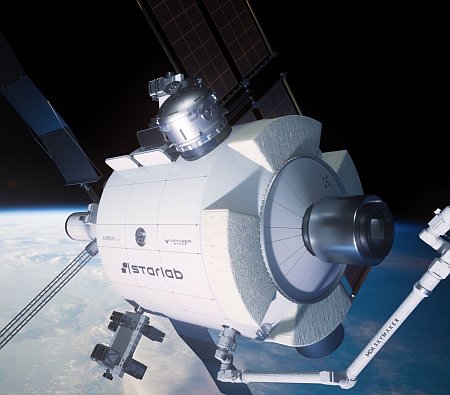
The Starlab design in 2025. Click
for original image.
The consortium building the Starlab space station today announced that the Sumitomo Mitsui Trust Bank of Japan has invested in the project.
Through this investment, SuMi TRUST Bank will support Starlab’s efforts to develop and commercialize space station technologies, while exploring opportunities for collaboration that contribute to the advancement of space-related industries and broader industrial development in Japan and globally.
The press release provided no other information, other than this boilerplate PR jargon. The amount invested was not mentioned.
Regardless, the investment tells us two things: First, Starlab has now raised more than $400 million in investment capital, and appears in a solid position to begin work on its large single module station to be launched on Starship.
Second, the investment in this American-based space project by this Japanese bank speaks volumes about the sad state of Japan’s own commercial space industry. Other than the lunar lander Ispace, Japan has seen little success from any other major rocket startups. One rocket startup, Interstellar, has obtained some investment capital, but the development of its rocket seemingly stopped for the past five years. Another, Space One, has had one launch failure. And though Honda has completed a successful vertical take-off and landing of a small rocket prototype, it doesn’t expect to attempt an orbital launch until 2030.
Meanwhile, the two rockets owned by Japan’s space agency JAXA, the H3 and Epsilon, are grounded because of launch failures.
It appears this bank believes it is more likely to earn profits from this American project than from these other Japanese space efforts.
An evening pause: I hope all my Christian readers had a wonderful and joyous Christmas, from your Jewish but very secular host. With good will to all!
Hat tip Judd Clark.
A mid-day pause: As I now do practically every Christmas, I bring you the classic 1951 version of Charles Dickens’ A Christmas Carol, starring Alastair Sim. In my opinion still by far the best adaption of the book and a truly wonderful movie.
And as I noted in a previous year:
Dickens did not demand the modern version of charity, where it is imposed by governmental force on everyone. Instead, he was advocating the older wiser concept of western civilization, that charity begins at home, that we as individuals are obliged as humans to exercise good will and generosity to others, by choice.
It is always a matter of choice. And when we take that choice away from people, we destroy the good will that makes true charity possible.
And in 2016 I said this:
I watched this again and felt like weeping, not because of the sentimentality of the story itself but because it is so seeped in a civilized world that increasingly no longer exists. There was a time when this was our culture. I fear it is no longer so. As noted by the Spirit of Christmas Present, “This boy is ignorance, this girl is want. Beware them both, but most of all beware this boy.”
It seems for the past few decades we have not heeded that warning, and are now reaping the whirlwind.
Link here. The article provides a very comprehensive list of the many former SpaceX employees who have left SpaceX to form their own companies, most of which in space or related industries, raising $3 billion in private investment capital.
The list includes a lot of very small operations doing work on the periphery, such as in the health industry or software for a variety of industries, not just space. It also includes some new major space players, such as the orbital tug company Impulse, and the recoverable capsule company Varda.
For some reason the article refers to this new generation of space entrepreneurs as the “SpaceX Mafia”, as if they are teaming up like mobsters to eliminate any competition. This is beyond false. Instead, they are the epitome of competition and the American dream, each forming their own company to push new ideas.
Take a look. It provides a nice and very hopeful overview of the future.
The Italian rocket company Avio has won a $81 million launch contract from Taiwan’s space agency TASA to use its Vega-C rocket to launch four Earth observation satellites.
FORMOSAT-8 will be a constellation of six high-resolution optical Earth observation satellites. The first was launched aboard a SpaceX Falcon 9 rocket in November. The next, FORMOSAT-8B, which does not yet have a publicly announced launch services provider, is, according to TASA, slated for launch in December 2026. The FORMOSAT-9 constellation will be made up of two synthetic aperture radar (SAR) satellites, which are expected to be launched in 2028 and 2030, respectively.
All four satellites will be launched aboard Vega C rockets from the Guiana Space Centre in French Guiana.
It is not clear if this contract involves four separate launches, or two (one for Formosat-8A and B, and a second for Formosat-9A and B). It is also not clear if this contract is one of the two launch contracts Avio had previously announced, without revealing the customers.
An evening pause: Another reprise, this time from 2020. As I wrote then: “This song honoring Jesus I think really speaks of every child born on Earth, and how every parent should see them. As Wordsworth said, they come ‘trailing clouds of glory.'”
Did you know that your baby boy has walked where angels trod?
When you kissed your little baby then you kissed the face of god.
According to this detailed update on SpaceX’s work at Boca Chica by NASASpaceflight.com, we should expect the next orbital test flight of Starship/Superheavy some time in March 2026.
As far as the launch date for this first flight of Block 3, sources point to March as the most likely viable timeframe. This launch will mark numerous firsts, from the vehicle, its Raptor 3 engines, and the first use of the upgraded Pad 2 architecture that will be mirrored at Pad 1, along with 39A and SLC-37 on the East Coast.
Block 3 refers to a major upgrade in Starship, which will fly prototype #39. Meanwhile, work getting Superheavy prototype #19 prepped has moved fast, following the loss of #18 from an explosion during ground fueling tests.
Recent observations show significant milestones: after welding the liquid oxygen (LOX) tank to the engine section (including pre-installed landing tanks and transfer tube), teams added methane tank barrels and the forward dome with its integrated hot staging ring. By December 20, all barrel sections were delivered and stacked, achieving this in just 25 days from November 25 — half the 42 days required for Booster 17, the final Version 1 booster.
The report also said that a February launch is a possibility, but is less likely.
Meanwhile, news outlets are reporting that the Trump administration is considering giving SpaceX about 775 acres in a wildlife preserve adjacent to Starbase in exchange for 692 acres SpaceX owns elsewhere. If confirmed, this deal would be similar to the land swap Texas had wished to do with SpaceX the company scrapped last year.
Last week the Italian rocket company Avio announced that it has signed launch contracts for its Vega-C rocket with two different unnamed satellite customers, the value of the contracts equaling $117 million total.
The satellites to be launched will be used for Earth observation, environmental monitoring and resource management purposes for civil and scientific applications, providing high-resolution imagery as well as best-in-class geolocation accuracy. The passengers will feature a mass ranging from more than 400 to more than 1,000 kilograms and will be deployed into a ~500 km Sun-synchronous orbit.
These contracts totally secure over EUR 100 million for launch services to be scheduled between 2028 and 2031.
Though the customers remain unnamed, the Avio release indicated that one was from Europe and the other was non-European. That latter contract deal could be linked to Avio’s announcement at about the same time that it is spending $500 million to build a rocket facility in Virginia. If the non-European customer was American and its satellites were for the Pentagon, having a U.S.-based facility made that contract award far more likely.
India’s space agency ISRO today (December 24 in India) successfully launched AST SpaceMobile’s sixth Bluebird satellite into orbit, its Bahubali rocket (LVM3) lifting off from its Sriharikota spaceport on India’s eastern coast.
This Bluebird is an upgrade from the first five satellites, providing ten times the bandwidth. The constellation acts as satellite cell towers for smart phones. These Bluebird satellites have been the largest in size ever launched, and this satellite will break their previous records. It is also the heaviest satellite India’s Bahubali rocket has ever put in orbit, on its sixth launch.
For India, this is its fourth launch in 2025. The leaders in the 2025 launch race:
168 SpaceX
86 China
18 Rocket Lab
15 Russia
SpaceX still leads the rest of the world in successful launches, 168 to 144.
An evening pause: I posted this Judd Clark suggestion previously in December 2023, but Judd sent it to me again and I agree, it deserves a reprise. It reminds us that despite all the craziness that has happened in the world in the past half century, children still see wonderful things we have forgotten exist.
According to a tweet by SpaceX yesterday, Starlink now has nine million active customers in 155 countries worldwide.
These numbers tell us the company is now getting more than a billion dollars per month in revenues, based on what it charges for its various plans. What make the numbers even more startling is how fast they are growing.
In a similar post from November 5, SpaceX said Starlink had 8 million customers, meaning that its customer base has expanded at a rate of more than 20,000 per day since that date.
At more than billion dollars per month, SpaceX essentially has about half the annual revenue of NASA, which it can use far more efficiently. And those numbers will only increase in the coming years, as the company opens up new markets worldwide and begins launching its upgraded Starlink satellites with Starship.
It still seems to me puzzling why, with these numbers, Musk is considering making the company public this coming summer. Though that move would bring in a gigantic amount of new investment capital from the stock sale, it would also subject the company to serious government regulation as a publicly-traded company. The Starlink revenue can only grow. Why add government interference when you can live without it?
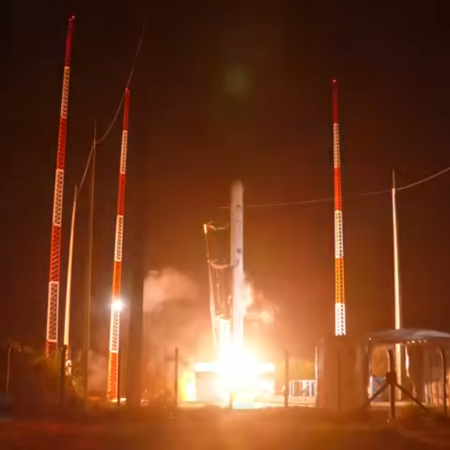
Though details are not yet available, the first launch by South Korean rocket startup Innospace of its Hanbit-Nano rocket failed less than 2 minutes after liftoff from Brazil’s long unused Alcantera spaceport. The failure occurred sometime after the rocket passed through max-q, the moment when the aerodynamic pressure of the atmosphere and the speed of the rocket stresses the rocket the most.
The live stream provided no details, other than to say “we experienced an anomaly during the flight.” No other details have yet been released.
The image to the right is a screen capture of the rocket lifting off the pad, less than a few seconds after T-0. Though the rocket appeared to move upward in a smooth controlled flight, soon thereafter it became impossible to see anything but the bright engine flame at its base. Either the flames were so bright it overexposed the live stream, or the fire was spreading beyond the nozzles. At the moment however we know nothing about what happened.
An evening pause: One of the most beautiful sections of Handel’s masterpiece, often missed because it is quiet and gentle in tone.
According a brief announcement today from Robert Lightfoot (ULA Lockheed Martin Board Chair) and Kay Sears (ULA Boeing Board Chair), Tory Bruno has resigned as CEO and president of United Launch Alliance, effective immediately.
After nearly 12 years leading United Launch Alliance (ULA), current ULA President and CEO Tory Bruno has resigned to pursue another opportunity.
We are grateful for Tory’s service to ULA and the country, and we thank him for his leadership.
Effective immediately, John Elbon is named as the Interim CEO. We have the greatest confidence in John to continue strengthening ULA’s momentum while the board proceeds with finding the next leader of ULA. Together with Mark Peller, the new COO, John’s career in aerospace and his launch expertise is an asset for ULA and its customers, especially for achieving key upcoming Vulcan milestones.
No further information was provided.
The timing is intriguing, as after a decade of effort, Bruno was about to get ULA’s new Vulcan rocket launching on a regular basis. I could speculate, but at the moment there isn’t enough information to make even a good guess.
Hat tip to reader Gary.
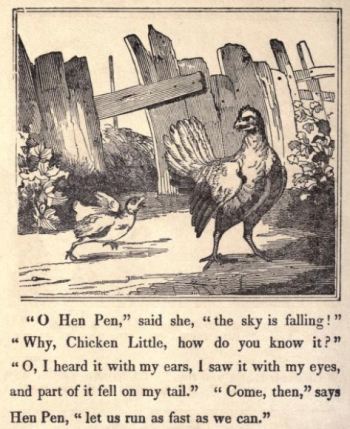
Chicken Little gains support!
It appears the political opposition by local politicians and activists against renewing Blue Origin’s wastewater permit for its Florida rocket facilities is growing, and could result in major delays for the company.
Four weeks ago, Cocoa Beach Realtor Jill Steinhauser launched an online petition opposing Blue Origin’s draft permit to discharge wastewater into the Indian River Lagoon, writing that “decades of nutrient pollution, algae blooms, seagrass collapse, habitat loss, and record manatee deaths have pushed this fragile ecosystem to the edge.” Since then, Space Coast buzz has significantly grown opposing Blue Origin’s permit-renewal bid to operate a 490,000-gallon-per-day industrial wastewater treatment facility at its massive rocket manufacturing plant just south of the Kennedy Space Center Visitor Complex.
And on Thursday, Dec. 18 — the Florida Department of Environmental Protection’s deadline date for public comment — Steinhauser submitted 43,475 verified petition signatures to the state agency.
A five-year permit had first been issued in 2020, and now needs to be renewed. Steinhauser’s campaign has apparently caught the interest of local Democratic Party politicians, who see another great way for them to to block another American success. In early December the Democrats on the Brevard county commission came out against renewing the permit, and followed up with an official vote of opposition shortly thereafter. This was then backed by the Cape Canaveral City Council on December 16th. That same week “eight Democratic state legislators signed a letter opposing Blue Origin’s draft permit.”
It appears that unlike SpaceX’s closed loop system, Blue Origin’s system is open-looped, which carries the possibility that its system can overflow into the Indian River Lagoon. However, officials from Florida’s Department of Environmental Protection (DEP) note that the system has more than ample capacity to avoid such an overflow.
The facility’s flow averages about 40,000 gallons per day, which is less than 10% of the maximum limit. The industrial wastewater covered by the permit does not come into contact with fuel or other hazardous materials, and it is discharged into a 9¼-acre stormwater retention pond. If the pond reaches its designed holding capacity during heavy rainfall, it overflows through a 3-mile-long drainage ditch along Ransom Road before eventually reaching the lagoon.
Though it is likely that this opposition will fail in the end, it could cause a delay in the permit renewal. If that happens, Blue Origin might find its launch plans for 2026 seriously hampered.

Spaceports surrounding the Norwegian Sea
The third proposed spaceport in Scotland, located on the northwest coast of the island of North Uist (as shown on the map to the right) has now received a conditional airspace approval by the United Kingdom’s Civil Aviation Authority (CAA).
While the airspace is designated as permanent, it will not be restricted indefinitely. Instead, it will be “activated by Notice to Aviation (NOTAM)” only when launch operations are scheduled to occur. The CAA noted that the approval is “subject to conditions” that the change sponsor must satisfy before the airspace can be fully utilised. Detailed regulatory assessments and the specific list of conditions are expected to be published on the CAA’s Airspace Change Portal shortly.
The spaceport’s airspace is set to become legally effective on Thursday, January 22.
Based on the CAA’s past behavior, this approval means very little. It will still require long lead times to issue any specific launch approvals, making any planned launches at this spaceport as difficult as all the other spaceports that have attempted to lift off from Great Britain. Those red tape delays put Virgin Orbit out of business. It has caused Orbex to abandon the Sutherland spaceport, which increasingly looks like a dead project. And it has caused numerous other small rocket startups to look everywhere else but Great Britain for a launch site.
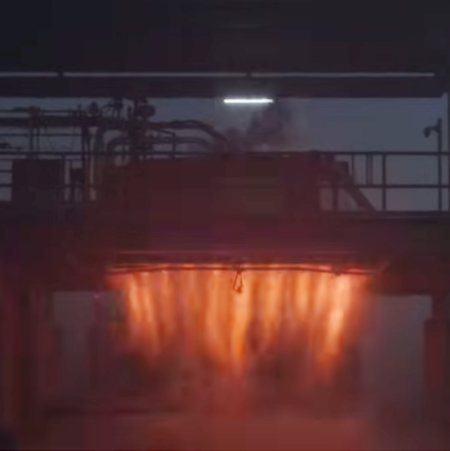
Tim Dodd of Everyday Astronaut yesterday released a long video in which he got a new tour the Stoke Space facility, led by the company’s CEO and founder, Andy Lapsa.
I have embedded that video below. The image to the right is a screen capture of a static fire test of the company’s Nova rocket’s upper stage engine that was done at the end of the tour. The engine uses a radical design of a ring of small nozzles, with a heat shield in the middle. The design aims to allow that upper stage to return to Earth for reuse, after it has deployed its payload. Nova’s first stage will also be reusable, landing vertically like the Falcon 9.
Though as usual Lapsa said nothing about schedule, it appears that the company is getting very close to its first launch. It appears the company’s launchpad in Florida will be ready for launch early in 2026. It also appears that all the rocket’s components are falling into place.
Lapsa noted that though both stages are designed to land and be reused, the goal for that first launch is simply to demonstrate they can get the rocket into orbit. Neither stage will attempt a landing. Once they’ve got that success under their belt, they will then go for other milestones.
Right now only SpaceX and Stoke Space are working to build a completely reusable rocket. SpaceX is going very big, with Starship. Stoke is aiming for the Falcon 9 market. If successful, it will be able to beat that rocket in price.
» Read more